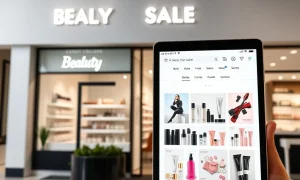Are you a small business owner aiming for significant growth in 2025? Understanding your audience stands as the most crucial step. Customers today face overwhelming choices. In fact, around two-thirds of shoppers often find it difficult to decide where to buy. For Gen Z, this figure rises to a staggering 80%. Many small businesses struggle to attract new customers. Their offerings often seem repetitive, leading to quick customer boredom. Knowing your exact audience helps your business avoid this common problem. This guide will help you refine your small business marketing efforts for unparalleled success.
Why Audience Insight Fuels Small Business Marketing
Understanding who buys your products and why they do so matters greatly. Businesses must know their customers. They need to understand shopping preferences and what truly attracts them. This information helps businesses create messages that genuinely resonate. Furthermore, it ensures your small business marketing budget is spent effectively. Without clear audience insights, campaigns often miss their mark. Therefore, investing time in audience research yields significant returns. It builds stronger connections and fosters lasting customer relationships.
Knowing your audience offers several distinct advantages:
- Targeted Messaging: Craft messages that speak directly to customer needs.
- Product Development: Create products and services customers truly desire.
- Channel Selection: Choose the most effective platforms for reaching your audience.
- Increased ROI: Maximize your return on investment for all marketing activities.
Generational Preferences: A Key to Effective Small Business Marketing
Different age groups exhibit distinct shopping habits. Consequently, your small business marketing strategies must adapt. Here’s an overview of how shopping preferences vary by generation:
| Generation | Primary Preference (Online/In-store) | Key Attractions |
|---|---|---|
| Gen Z | Online (over 50%) | Social media, emotional connection, authenticity |
| Millennials | Balanced preference | Branding, values, inclusion, convenience |
| Gen X | In-store (60%) | Convenience, quality, loyalty programs |
| Baby Boomers | In-store (83%) | Local support, community, simplicity, direct mail |
Marketing to Gen Z: Digital Natives and Authenticity
Gen Z primarily discovers small businesses through social media. Around 75% use platforms like Instagram and TikTok. A strong emotional connection is important for a quarter of young shoppers. Most also consider a website essential for any small business. Popular merchandise among Gen Z includes T-shirts, hoodies, and stickers. To attract Gen Z, businesses should use bold and modern branding. They should also offer merchandise that appeals directly to current trends. Sharing authentic, personal stories on social media works wonders. Simple videos, like packaging orders or preparing for events, effectively showcase your business’s authentic side. This approach significantly enhances your small business marketing reach with this demographic.
Connecting with Millennials: Values, Branding, and Inclusion
Millennials value brand identity and ethical considerations highly. Approximately 86% believe websites are crucial in their purchasing decisions. About 31% are influenced by strong branding, the highest among all age groups. They often choose brands that clearly support equality and inclusion. Preferred merchandise for Millennials includes T-shirts, hoodies, and drinkware. Businesses targeting Millennials should focus on clearly communicating their values. They must create distinct and recognizable branding. Offering engaging promotional materials, such as postcards and discount cards, also helps. Your small business marketing efforts must align with their social consciousness.
Engaging Gen X: Quality, Convenience, and Loyalty
Gen X prefers shopping in-store. Yet, 89% highly value well-designed websites. Quality and convenience are their top considerations when purchasing. Approximately 75% prioritize product quality, location, and customer support. Loyalty programs appeal to two-thirds of Gen X, encouraging repeat business. To appeal to Gen X, host local events and pop-up shops. Provide follow-up communications, such as thank-you notes and loyalty rewards. Highlight product quality clearly and consistently. These strategies strengthen your small business marketing approach for this generation.
Reaching Baby Boomers: Local Support and Simplicity
Baby Boomers strongly prefer in-store shopping, with just 17% opting to shop online. Nearly two-thirds shop locally to support their community, the highest of all generations. Direct mail and physical flyers motivate 38% of Baby Boomers to visit a business. Effective strategies for reaching Baby Boomers include utilizing local marketing through signage and newspapers. Sending clear, simple direct mail promotions also works. Participating in community events builds trust. Your small business marketing for this group benefits from traditional, community-focused methods.
Effective Strategies for Targeted Small Business Marketing
Effective marketing happens when businesses clearly understand their audience. With detailed insights into customer preferences, businesses can design focused and intentional marketing strategies. Knowing exactly what customers want allows businesses to craft personalized and relevant content. This content resonates strongly with different audience groups. Here are practical tips to maximize effectiveness in your small business marketing:
- Customise Content: Tailor content specifically for each audience group. Address their unique needs and interests directly.
- Choose Platforms Wisely: Select platforms that match where your audience shops or browses. This maximizes visibility and engagement.
- Offer Desirable Merchandise: Provide branded merchandise that your customers genuinely want and will actively use. This enhances brand recall and loyalty.
- Display Core Values: Clearly showcase your brand’s core values in all marketing materials. This builds trust and credibility among your customers.
- Leverage User-Generated Content: Encourage customers to share their experiences. This provides authentic social proof.
Tools and Techniques for Audience Research in Small Business Marketing
To truly understand your audience, you need reliable data. Several tools and techniques can provide valuable insights for your small business marketing. Implementing these methods ensures your strategies are data-driven and effective.
- Customer Surveys and Feedback Forms: Directly ask your customers about their preferences, needs, and pain points. Use online tools like SurveyMonkey or Google Forms for easy distribution. In-store feedback boxes also work well.
- Website Analytics: Tools like Google Analytics provide crucial data. They show who visits your site, how long they stay, and what pages they view. This reveals user behavior patterns.
- Social Media Listening: Monitor conversations about your brand, industry, and competitors. Tools like Hootsuite or Brandwatch help track mentions and sentiment. This uncovers emerging trends and customer opinions.
- Competitor Analysis: Study what your competitors do well and where they fall short. This helps identify gaps in the market and refine your own offerings.
- Focus Groups and Interviews: Conduct small, in-depth discussions with target customers. These qualitative insights reveal motivations and perceptions that surveys might miss.
- CRM Data Analysis: Your Customer Relationship Management (CRM) system holds a wealth of information. Analyze purchase history, interaction logs, and demographics to segment your audience.
Benefits of Audience Awareness for Sustainable Small Business Marketing
Recognizing and understanding your audience offers numerous significant benefits. With a clear view of who your customers are, businesses can efficiently allocate resources. This reduces wasted spend on ineffective strategies. A deep understanding of customer preferences fosters trust and loyalty. It makes it easier to maintain relationships and boost repeat purchases. Ultimately, knowing your audience translates to higher profitability and long-term business growth. Your small business marketing becomes a powerful engine for success.
Key benefits include:
- Improved Customer Retention: Targeted marketing and personalized interactions lead to lasting relationships.
- More Effective and Efficient Marketing Spend: Resources are directed precisely where needed, maximizing impact.
- Stronger Brand Loyalty: Building genuine relationships and trust with your audience creates advocates.
- Increased Sales: Accurately targeted campaigns and products directly boost revenue.
- Enhanced Product Development: Insights guide the creation of products customers truly want.
- Competitive Advantage: Businesses that know their audience better outperform rivals.
Merchandising Preferences Across Generations: Boosting Your Brand
Across generations, certain merchandise remains consistently popular. These items provide excellent opportunities for brand promotion and customer engagement. Products such as T-shirts and hoodies act as wearable billboards. They enhance brand visibility in everyday settings. Drinkware and stickers serve as affordable and practical additional items. Customers frequently use them, further strengthening brand recognition. Businesses should prioritize the creation and promotion of high-quality merchandise. It must be both appealing and reflective of the brand’s image. This strategy significantly boosts your small business marketing efforts.
Popular merchandise items include:
- T-shirts: Universally loved across all age groups, offering broad appeal.
- Hoodies: Broadly appealing, particularly popular among younger customers (Gen Z, Millennials).
- Drinkware: Useful supplementary items, like mugs or water bottles, enjoyed widely.
- Stickers: Affordable, versatile, and popular for personalizing belongings, especially with Gen Z.
- Tote Bags: Practical and eco-friendly, offering high visibility for your brand.
Businesses should focus on high-quality, well-branded merchandise. This increases customer engagement and brand visibility. It turns customers into walking advertisements for your brand.
Practical Example: Authenticity in Small Business Marketing
Authenticity significantly impacts marketing effectiveness. Small businesses succeed when customers feel connected to real people behind the brand. For example, posting simple behind-the-scenes videos on social media is a highly effective strategy. Customers appreciate genuine glimpses into the everyday activities of businesses they support. Showcasing your team, your process, or even a day in the life of your business builds trust. This approach humanizes your brand. It fosters a deeper connection than polished, overly commercial content. This authentic storytelling is a powerful element of successful small business marketing.
Audience Insights in Numbers: Key Data for Your Small Business Marketing
Important statistics highlight generational differences in shopping preferences. Understanding these figures helps small businesses tailor their marketing strategies effectively. They provide a data-driven foundation for your small business marketing plans:
- Gen Z: Over 50% shop online. Furthermore, 75% prefer discovering brands on social media platforms.
- Millennials: 86% rate websites as essential. Moreover, 31% are influenced by strong branding, the highest of any group.
- Gen X: 60% prefer physical shopping experiences. Also, 75% focus on product quality. About 67% value loyalty programs.
- Baby Boomers: 83% shop in-store. Notably, 38% are influenced by direct mail. Additionally, 66% prioritize supporting local businesses.
These numbers underscore the need for segmented marketing approaches. Your small business marketing must adapt to these diverse preferences.
Final Thoughts on Mastering Small Business Marketing
Knowing your audience is essential for small business marketing success in 2025. A clear understanding leads to better connections, increased sales, and lasting customer loyalty. By focusing on audience-specific strategies, small businesses can significantly enhance their market impact. Businesses that deeply understand their customers can transform them from one-time buyers into regular patrons. Genuine connections create trust and ensure long-term success. Invest in understanding your customers; it’s the best marketing decision you will make.
Frequently Asked Questions About Small Business Marketing
Why is knowing your audience important for small business marketing?
Understanding your audience helps tailor your marketing effectively, increasing sales and customer loyalty. It ensures your efforts resonate with the right people.
What merchandise appeals most to Gen Z in small business marketing?
T-shirts, hoodies, and stickers are highly popular among Gen Z. These items offer a way for them to express themselves and connect with brands.
How do Millennials choose brands for small business marketing?
Millennials are influenced by strong branding, clear values, and inclusive messaging. They seek brands that align with their personal beliefs and offer convenience.
What attracts Gen X customers in small business marketing?
Gen X prioritizes convenience, product quality, and loyalty programs. They appreciate straightforward, high-value offerings and reliable customer support.
Why do Baby Boomers prefer local shopping for small business marketing?
Baby Boomers often prefer shopping locally to support their community and local businesses. They value personal interaction and simplicity in their shopping experience.
What marketing is best for Baby Boomers in small business marketing?
Direct mail, local advertisements (newspapers, signage), and participation in community events are highly effective for reaching Baby Boomers. They respond well to traditional, trust-based methods.
























